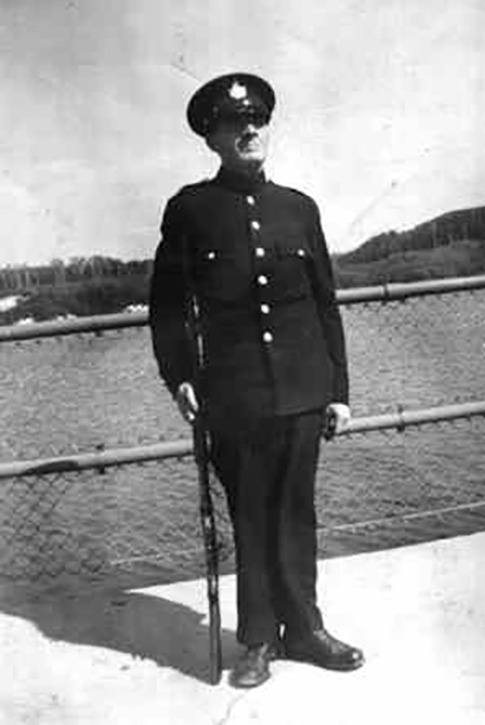By Moush Sara John
Courtesy of the Stettler Independent
On a cold April 19th, 1916, Archie MacDonald answered the call for his country.
He joined the 228th Northern Fusiliers Battalion, CEF (Canadian Expeditionary Force) out of North Bay, Ontario.
In October, he sailed for England with the Canadian Railway Troops, which would be later renamed the 6th Battalion. From England they went to France where they prepared for the war zone.
By the end of February 1917, five units of Canadian Railway Troops (CRT) were in France with more to arrive in April.
Before the war would end there would be 16,000 men with the CRT that would provide construction of railway lines to transport the troops to the front lines.
“The men that fought alongside them could escape to the trenches, but the men building railway lines were not armed and out in the open and my grandfather was one of them,” Castor resident Beth Elhard said. “Many were shot and killed and hit with bombs.”
Over 1,100 miles of broad-gauge and 1,400 miles of light track were laid with over 8,000 men building line under fire.
“So many never made it home and countless came home injured,” Elhard said. “What the bombs and bullets didn’t get, the mustard gas eventually killed. Polluting the battlefields and trenches, the gas would blister the skin of those in contact with it and attack the mucus membranes of their bronchial tubes.”
If they survived, they would cough the rest of their lives, just as Elhard’s grandfather did.
“He always had a cough,” Elhard recalled.
On Easter Sunday, April 9th, 1917, as the snow and sleet came down, hundreds of men were building and maintaining the spur lines that brought the ammunition and bombs to the soldiers at Vimy Ridge.
“All around them there was shelling and bombing and rifle fire, with the spur lines also bringing back the wounded,” Elhard narrated. “So many of them were fellow Canadians. As they repaired the lines to keep the supplies coming forward, screams of pain and a terrible world of carnage swirled around the railroaders.”
The men of the 6th Battalion had the small satisfaction of knowing that their job was important to the battle.
“Cold, muddy and exhausted they laboured on beside the men in the trenches until Vimy Ridge was captured,” Elhard recalled from what she had been told earlier about this momentous victory. “Canada came into its own after 100,000 Canadian soldiers of four divisions came together and stormed The Pimple on April 12, 1917.”
In four days, the Ridge was captured but at a terrible cost – Canada had lost 3,589 men and more than 7,000 had been injured.
“Sixty miles of narrow gauge lines made it to the top of the Ridge a week after its capture,” Elhard commented. “From Vimy Ridge to Ypres to Passchendaele they built train tracks. The CRT lost over 1,900 men, and on the 11th hour of the 11th day of the 11th month of 1918 in a railway car in the forests of Compiègne France, north of Paris, ‘the war to end all wars’ was over.”
Elhard said she was told that although the physical part was over – the tracks had been laid, the war won – for many, the battles would never end.
“For my grandfather, laying track in the future would never be the same,” Elhard added. “In his mind he would always hear the guns and shouts of pain and the bombs falling around him, even when he returned to the peaceful forests of northern Ontario.”
Elhard said that her grandmother recalled how for months when MacDonald first came home he would wake up screaming and be covered in sweat and she would sit with her arms around him, holding him and rocking him as though he were a baby.
“My grandmother said he was not the same man who left to fight for his country. Though he had no visible wounds, he was injured.”
Elhard said these men who had no “visible injuries” were called “shell shocked” and their loved ones didn’t know what to do with them.
“It took him awhile before he could work and then he began to use the bottle to help get him through. He would miss work. They would fire him and rehire him,” Elhard narrated. “Some days grandmother said she did not know where the food was going to come from. His children learned not to ask about the war but in time three sons would serve their country in World War Two.”
The CRT who laid track in World War One were disbanded shortly after they returned home, their job, though not military in nature, was forgotten.
“I will not forget what my grandfather and many like him sacrificed,” Elhard said. “On April 9th please take a moment out of your lives and remember them all. After all they are the reason you can live your freedom as a Canadian.”



